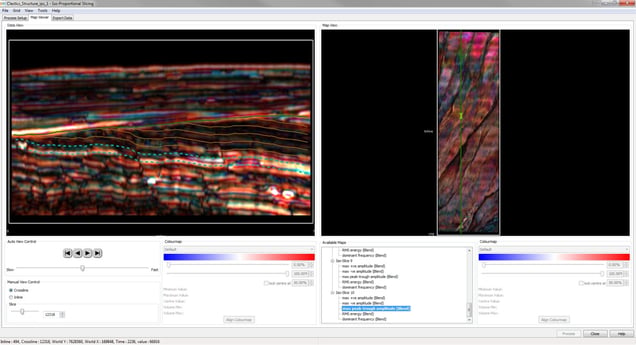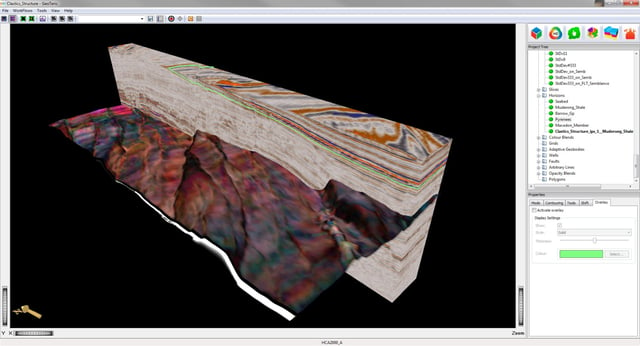Horizon interpretation is known to be very time consuming. Therefore, the advantage of having the IPS tool is that an interpreter can interpret one or two bounding horizons, which could be non-parallel, put them up within the IPS tool and create Iso-slices. Iso-slices are smaller packages bounded by intermediate surfaces equidistant from the main bounding horizons.
With this tool, it allows you to generate maps of attributes at intervals spaced between two times slices or horizons. It helps identify anomalies and separate them into different slices or time epochs either conformant or Iso-Proportional.
The user defines the region of data to be analysed and sets the number of Iso-slices and attribute maps to be created.
Each Trace is therefore divided into segments - one in each Iso-slice - and gives rise to one data value in the attribute map. A single attribute map describes bulk measurements drawn from the trace information within the respective Iso-slice.

The steps are:
- Process Setup: to define the Iso-slice positions and the attributes to be calculated
- Map Viewer: to view and cross check the results
- Export Data: to export the results
The choice of slicing mode is important, and will depend on what horizons are available. Truncation is available for all three slicing modes, whereas conformant is only applicable to the dual horizon mode.
Conformant Slicing: Surface Truncates Iso-Proportional Slices with a third horizon
Surface Truncation: Conformant Slicing generates Slices conformant to a single horizon, which are truncated by a second horizon.  The image above represents an attribute draped on an IPS horizon
The image above represents an attribute draped on an IPS horizon

